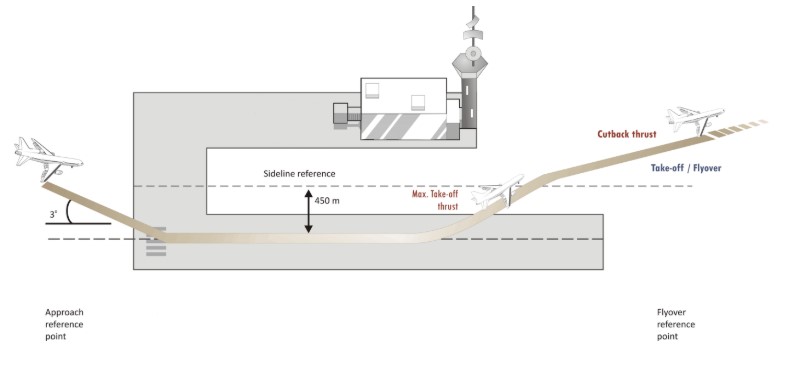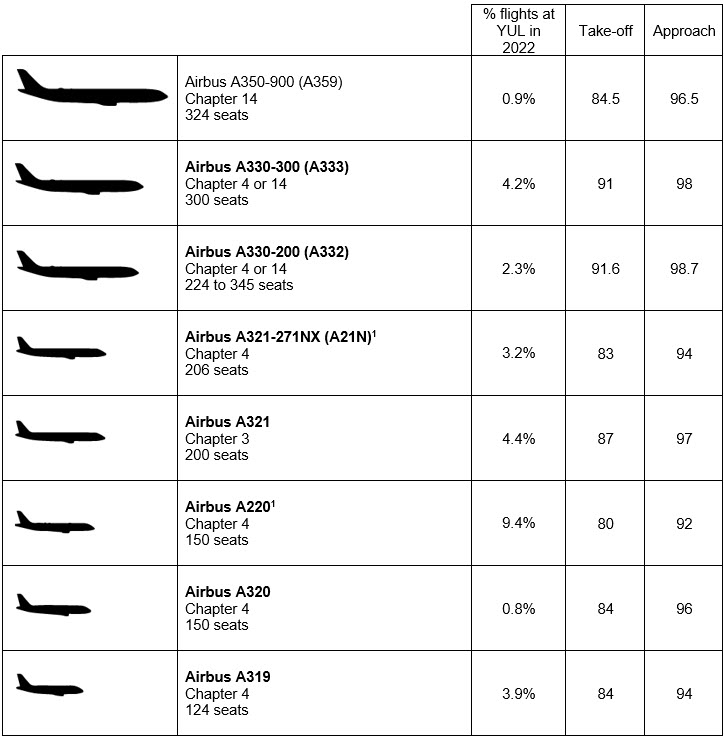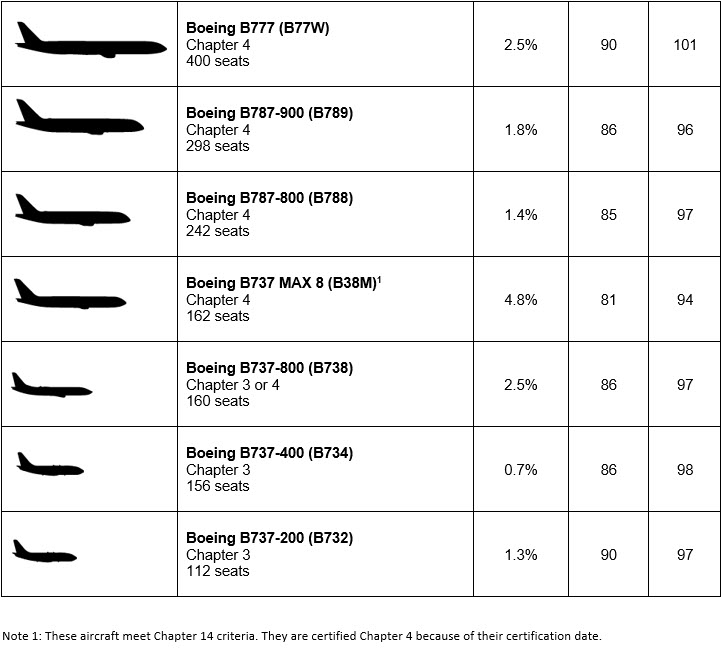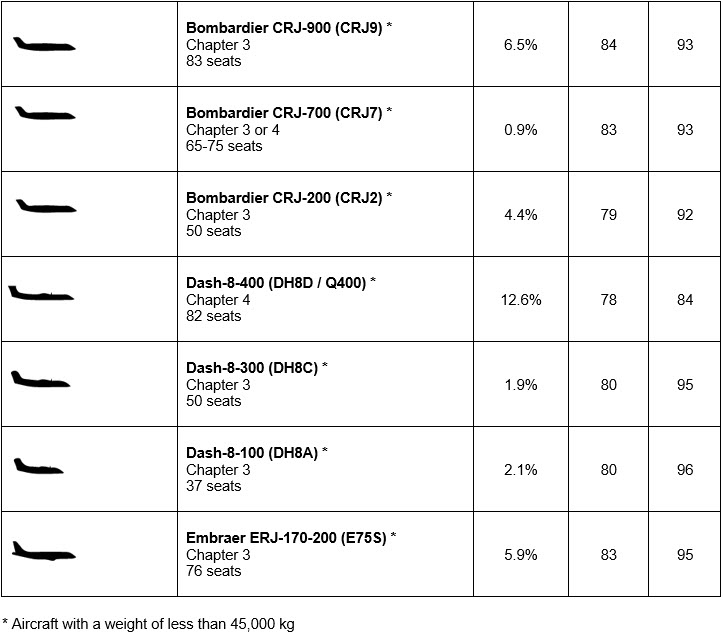In the past, generally speaking, bigger planes made more noise than smaller ones. However, engine technology has improved greatly in recent years, so some older, smaller aircraft are now noisier than the latest-generation wide-body jets that are more efficient in terms of their noise footprint.
The acoustic performances of each type of air transport aircraft are characterized by three noise-level measurements determined according to procedures defined by the International Civil Aviation Organization (ICAO). These three noise levels are measured on approach, takeoff under full power, and overflight. The standards also consider the mass of the aircraft and the number of engines.
The aerospace industry currently distinguishes between several generations of aircraft, referred to as chapters.
-
Chapter 2: These are older planes dating from before 1977, equipped with earlier-generation engines. Apart from exceptions, these aircraft have not been allowed to fly in Canada since 2002.
-
Chapter 3: Aircraft certified between 1977 and 2005. Note that some Chapter 2 aircraft have been fitted with noise-attenuation devices, called “hush kits,” to improve their acoustic certification to meet Chapter 3 requirements. These aircraft are marginally compliant with this standard, so they are louder than aircraft that are certified Chapter 3 when manufactured.
-
Chapter 4: All new aircraft certified between 2006 and 2017 for aircraft over 55,000 kg and to the end of 2020 for aircraft less than 55,000 kg.
-
Chapter 14: Aircraft certified since 2018 for planes over 55,000 kg and since 2021 for planes less than 55,000 kg.
The acoustic performance of new generation aircraft, such as the Airbus A220 and A321neo, as well as the Boeing B737 Max, is considerable compared to older generation aircraft.
Noise Certification - Major Aircraft Operating at Montréal-Trudeau:
Air carriers choose their fleet of aircraft. Airplanes and helicopters must meet international noise certification standards that are adopted by the ICAO Council (International Civil Aviation Organization). These standards take into account the mass of the aircraft and the number of engines. They also establish the method to be used to evaluate noise levels.
Transport Canada issues certifications for the operation of aircraft in Canada. All aircraft must comply with ICAO noise standards that are incorporated in Canadian Aviation Regulations.
When certifying an aircraft, measurements must be made at three certification points corresponding to the approach, take-off and flyover, as shown below (taken from the Aircraft Noise section of the ICAO site).

Location of certification points for take-off and landing:
• Fly-over (take-off): point located at 6.5 km from the start of rolling (brake-release point), under the take-off flight path
• Approach: point located at 2 km from the runway threshold, under the approach flight path
The levels thus measured are corrected according to the tone of the recorded sounds and their duration. The sound level thus obtained is expressed in EPNdB or effective perceived noise level. As a result, certification levels can not be compared with those read by sound level meters, which are usually expressed in dB (A).
Certification noise levels in EBNdB (cannot be compared with dB(A) noise levels)
The aircraft below operated 78% of air movements at YUL Montréal-Trudeau in 2022.



Noise certification levels are an average of information from international databases and may differ from the noise certification level specific to each aircraft. The date of certification, the type of engines and the weight of the aircraft can influence the certification of the aircraft.



